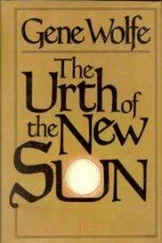Tom Wolfe - The Right Stuff
Здесь есть возможность читать онлайн «Tom Wolfe - The Right Stuff» весь текст электронной книги совершенно бесплатно (целиком полную версию без сокращений). В некоторых случаях можно слушать аудио, скачать через торрент в формате fb2 и присутствует краткое содержание. Жанр: Современная проза, на английском языке. Описание произведения, (предисловие) а так же отзывы посетителей доступны на портале библиотеки ЛибКат.
- Название:The Right Stuff
- Автор:
- Жанр:
- Год:неизвестен
- ISBN:нет данных
- Рейтинг книги:3 / 5. Голосов: 1
-
Избранное:Добавить в избранное
- Отзывы:
-
Ваша оценка:
- 60
- 1
- 2
- 3
- 4
- 5
The Right Stuff: краткое содержание, описание и аннотация
Предлагаем к чтению аннотацию, описание, краткое содержание или предисловие (зависит от того, что написал сам автор книги «The Right Stuff»). Если вы не нашли необходимую информацию о книге — напишите в комментариях, мы постараемся отыскать её.
The Right Stuff — читать онлайн бесплатно полную книгу (весь текст) целиком
Ниже представлен текст книги, разбитый по страницам. Система сохранения места последней прочитанной страницы, позволяет с удобством читать онлайн бесплатно книгу «The Right Stuff», без необходимости каждый раз заново искать на чём Вы остановились. Поставьте закладку, и сможете в любой момент перейти на страницу, на которой закончили чтение.
Интервал:
Закладка:
Yeager was flying chase one day for Bill Bridgeman, the prime pilot for one of the greatest rocket planes, the Douglas Skyrocket, when the ship went into a flat spin followed by a violent tumble. Bridgeman fought his way out of it and regained stability, only to have his windows ice up. This was another common danger in rocket flights. He was out of fuel, so that he was now faced with the task of landing the ship both deadstick and blind. At this point Yeager drew alongside in his F-86 and became his eyes. He told Bridgeman every move to make every foot of the way down… as if he knew that ol' Skyrocket like the back of his hand… and this was jes a little ol' fishin' trip on the Mud River… and there was jes the two of 'em havin' a little poker-hollow fun in the sun… and that lazy lollygaggin' chucklin" driftin' voice was still purrin' away… the very moment Bridgeman touched down safely. You could almost hear Yeager saving to Bridgeman, as he liked to do:
"How d'ye hold with rockets now, son?"
That was what you thought of when you saw the F-86 do a slow roll sixty feet off the deck and disappear across Rogers Lake.
Yeager had just turned thirty. Bridgeman was thirty-seven. It didn't dawn on him until later that Yeager always called him son . At the time it had seemed perfectly natural. Somehow Yeager was like the big daddy of the skies over the dome of the world. In keeping with the eternal code, of course, for anyone to have suggested any such thing would have been to invite hideous ridicule. There were even other pilots with enough Pilot Ego to believe that they were actually better than this drawlin' hot dog. But no one would contest the fact that as of that time, the 1950's, Chuck Yeager was at the top of the pyramid, number one among all the True Brothers.
And that voice … started drifting down from on high. At first the tower at Edwards began to notice that all of a sudden there were an awful lot of test pilots up there with West Virginia drawls. And pretty soon there were an awful lot of fighter pilots up there with West Virginia drawls. The air space over Edwards was getting so caint-hardly super-cool day by day, it was terrible. And then that lollygaggin' poker-hollow air space began to spread, because the test pilots and fighter pilots from Edwards were considered the pick of the litter and had a cachet all their own, wherever they went, and other towers and other controllers began to notice that it was getting awfully drawly and down-home up there, although, they didn't know exactly why. And then, because the military is the training ground for practically all airline pilots, it spread further, until airline passengers all over America began to hear that awshuckin' driftin' gone-fishin' Mud River voice coming from the cockpit… "Now, folks, uh… this is the captain… ummmm… We've got a little ol' red light up here on the control panel that's tryin' to tell us that the landin' gears're not… uh… lockin' into position…"
But so what! What could possibly go wrong! We've obviously got a man up there in the cockpit who doesn't have a nerve in his body! He's a block of ice! He's made of 100 percent righteous victory-rolling True Brotherly stuff.
Yeager quit testing rocket planes in 1954 and returned to strictly military flying. First he went to Okinawa to test a Soviet MiG-15 that a North Korean defector, a pilot named Kim Sok No, had arrived in, giving the Air Force its first opportunity to study this fabled craft. American pilots used to come back from the Yalu River saying that the MiG-15 was so hot you could put your F-86 in a power dive and the MiG would fly outside loops around you all the way down. Yeager took the MiG-15 up to 50,000 feet and then down to 12,000 feet in a power dive without even so much as an instruction manual to go by. He found that it would outclimb and outaccelerate the F-86, but that the F-86 had a higher top speed in both level flight and in dives. The MiG-15 was good but not exactly a superfighter that should strike terror in the heart of the West. Yeager had to chuckle. Some things never changed. You let any fighter jock talk about the enemy aircraft and he'll tell you it's the hottest thing that ever left the ground. After all, it made him look just that much better when he waxed the bandit's tail. Then Yeager went to Germany to fly F-86s and to train the American combat squadrons there in a special air-alert system. By October 4, 1957, he was back in the United States, at George Air Force Base, about fifty miles southeast of Edwards, commanding a squadron of F-100s, when the Soviet Union launched the rocket that put a 184-pound artificial satellite called Sputnik 1 into orbit around the earth.
Yeager was not terribly impressed. The thing was so goddamned small. The idea of an artificial earth satellite was not novel to anyone who had been involved in the rocket program at Edwards. By now, ten years after Yeager had first flown a rocket faster than Mach 1, rocket development had reached the point where the idea of unmanned satellites such as Sputnik 1 was taken for granted. Two years ago, 1955, the government had published a detailed description of the rockets that would be used to launch a small satellite in late 1957 or early 1958 as part of the United States' contribution to the International Geophysical Year. Engineers for NACA and the Air Force and several aircraft companies were already designing manned spacecraft as the logical extension of the X series. The preliminary design section of North American Aviation had working drawings and most of the specifications for a fifteen-ton ship called the X-15B, a winged craft that would be launched by three enormous rockets, each with 415,000 pounds of thrust, whereupon the ship's two pilots would take over with the X-15B's own 75,000-pound engine, make three or more orbits of the earth, reenter the atmosphere, and land on a dry lake bed at Edwards like any other pilots in the X series. This was no mere dream. North American was already manufacturing a ship almost as ambitious: namely the X-15. Scott Cross-field was in training to fly it. The X-15 was designed to achieve an altitude of 280,000 feet, just above fifty miles, which was generally regarded as the boundary where all trace of atmosphere ended and "space" began. Within a month after the launching of Sputnik 1, North American's chief engineer, Harrison Storms, was in Washington with a completely detailed proposal for the X-15B project. His turned out to be one among 421 proposals for manned spacecraft that had been submitted to NACA and the Defense Department. The Air Force was interested in a rocket-glider craft, similar to the X-15B, that would be called the X-20 or Dyna-Soar, for "dynamic soaring"; an Air Force rocket, the Titan, which was under development, would provide the 500,000 pounds of thrust that would be required. Naturally the pilots of the X-15B or the X-20 or whatever—the first Americans and possibly the first men in the world to go into space—would come from Edwards. At Edwards you had men like Crossfield, Iven Kincheloe, and Joe Walker, who had already flown rockets many times.
So what was the big deal about Sputnik 1? The problem was already on the way to being solved.
That was the way it looked to Yeager and to everybody involved in the X series at Edwards. It was hard to realize how Sputnik 1 looked to the rest of the country and particularly to politicians and the press… and other technological illiterates with influence… It was hard to realize that Sputnik 1, if not the MiG-15, would strike terror in the heart of the West.
After two weeks, however, the situation was obvious: a colossal panic was underway, with congressmen and newspapermen leading a huge pack that was baying at the sky where the hundred-pound Soviet satellite kept beeping around the world. In their eyes Sputnik 1 had become the second momentous event of the Cold War. The first had been the Soviet development of the atomic bomb in 1953. From a purely strategic standpoint, the fact that the Soviets had the rocket power to launch Sputnik 1 meant that they now also had the capacity to deliver the bomb on an intercontinental ballistic missile. The panic reached far beyond the relatively sane concern for tactical weaponry, however. Sputnik 1 took on a magical dimension—among highly placed persons especially, judging by opinion surveys. It seemed to dredge up primordial superstitions about the influence of heavenly bodies. It gave birth to a modern, i.e., technological, astrology. Nothing less than control of the heavens was at stake. It was Armageddon, the final and decisive battle of the forces of good and evil. Lyndon Johnson, who was the Senate majority leader, said that whoever controlled "the high ground" of space would control the world. This phrase, "the high ground," somehow caught hold. "The Roman Empire," said Johnson, "controlled the world because it could build roads. Later—when it moved to sea—the British Empire was dominant because it had ships. In the air age we were powerful because we had airplanes. Now the Communists have established a foothold in outer space." The New York Times , in an editorial, said the United States was now in a "race for survival." The panic became more and more apocalyptic. Nothing short of doom awaited the loser, now that the battle had begun. When the Soviets shot a Sputnik called Mechta into a heliocentric orbit, the House Select Committee on Astronautics, headed by House Speaker John McCormack, said that the United States faced the prospect of "national extinction" if it did not catch up with the Soviet space program. "It cannot be overemphasized that the survival of the free world—indeed, all the world—is caught up in the stakes." The public, according to the Gallup poll, was not all that alarmed. But McCormack, like a great many powerful people, genuinely believed in the notion of "controlling the high ground." He was genuinely convinced that the Soviets would send up space platforms from which they could drop nuclear bombs at will, like rocks from a highway overpass.
Читать дальшеИнтервал:
Закладка:
Похожие книги на «The Right Stuff»
Представляем Вашему вниманию похожие книги на «The Right Stuff» списком для выбора. Мы отобрали схожую по названию и смыслу литературу в надежде предоставить читателям больше вариантов отыскать новые, интересные, ещё непрочитанные произведения.
Обсуждение, отзывы о книге «The Right Stuff» и просто собственные мнения читателей. Оставьте ваши комментарии, напишите, что Вы думаете о произведении, его смысле или главных героях. Укажите что конкретно понравилось, а что нет, и почему Вы так считаете.











